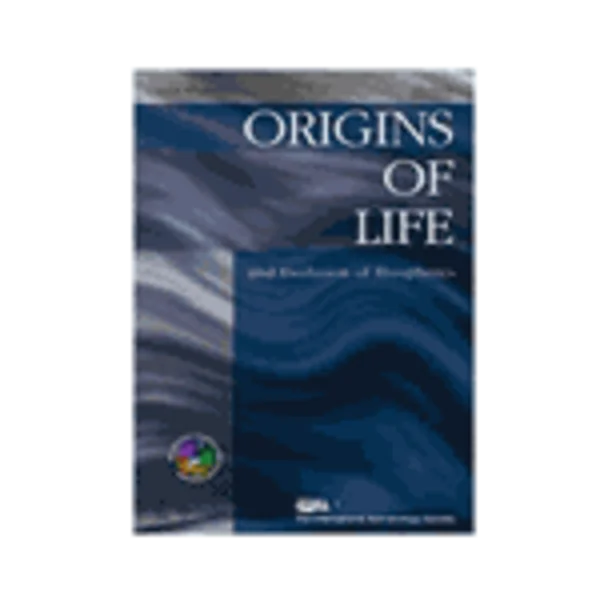-
biofilm and planktonic lifestyles differently support the resistance of the desert cyanobacterium chroococcidiopsis under space and martian simulations
جزئیات بیشتر مقاله- تاریخ ارائه: 1392/07/24
- تاریخ انتشار در تی پی بین: 1392/07/24
- تعداد بازدید: 930
- تعداد پرسش و پاسخ ها: 0
- شماره تماس دبیرخانه رویداد: -
when chroococcidiopsis sp. strain ccmee 057 from the sinai desert and strain ccmee 029 from the negev desert were exposed to space and martian simulations in the dried status as biofilms or multilayered planktonic samples, the biofilms exhibited an enhanced rate of survival. compared to strain ccmee 029, biofilms of strain ccme 057 better tolerated uv polychromatic radiation (5 × 105 kj/m2 attenuated with a 0.1 % neutral density filter) combined with space vacuum or martian atmosphere of 780 pa. ccmee 029, on the other hand, failed to survive uv polychromatic doses higher than 1.5 × 103 kj/m2. the induced damage to genomic dna, plasma membranes and photosynthetic apparatus was quantified and visualized by means of pcr-based assays and clsm imaging. planktonic samples of both strains accumulated a higher amount of damage than did the biofilms after exposure to each simulation; clsm imaging showed that photosynthetic pigment bleaching, dna fragmentation and damaged plasma membranes occurred in the top 3–4 cell layers of both biofilms and of multilayered planktonic samples. differences in the eps composition were revealed by molecular probe staining as contributing to the enhanced endurance of biofilms compared to that of planktonic samples. our results suggest that compared to strain ccmee 029, biofilms of strain ccmee 057 might better tolerate 1 year’s exposure in space during the next expose-r2 mission.
مقالات جدیدترین رویدادها
-
استفاده از تحلیل اهمیت-عملکرد در ارائه الگوی مدیریت خلاقیت سازمانی و ارائه راهکار جهت بهبود
-
بررسی تاثیر ارزش وجوه نقد مازاد بر ساختار سرمایه شرکت های پذیرفته شده در بورس اوراق بهادار تهران
-
بررسی تأثیر سطح افشای ریسک بر قرارداد بدهی شرکت های پذیرفته شده در بورس اوراق بهادار تهران
-
بررسی تأثیر رتبه بندی اعتباری مبتنی بر مدل امتیاز بازار نوظهور بر نقد شوندگی سهام با تأکید بر خصوصی سازی شرکت ها
-
تأثیر آمیخته بازاریابی پوشاک ایرانی بر تصویر ذهنی مشتری پوشاک ایرانی (هاکوپیان)
-
بررسی تاثیر ابعاد قطعات بتنی در تعیین سرعت امواج فراصوتی و تاثیرآن در تخمین مقاومت فشاری بتن سخت شده
-
تحلیل حدی کران بالا ظرفیت بیرون کشیدکی لرزه ای مهار نواری افقی بر مبنای روش شبه دینامیکی
-
بهینه سازی هزینه و زمان در پروژه های ساخت
-
بررسی کمی و کیفی گونه جنگل کاری شده گز (.tamarix aphylla l) در حاشیه دریاچه ارومیه (مطالعه موردی: جبل کندی ارومیه)
-
مقایسه شتاب نگاشت های مقیاس شده و مصنوعی بر اساس طیف لرزه ای طراحی آیین نامه 2800
مقالات جدیدترین ژورنال ها
-
مدیریت و بررسی افسردگی دانش آموزان دختر مقطع متوسطه دوم در دروان کرونا در شهرستان دزفول
-
مدیریت و بررسی خرد سیاسی در اندیشه ی فردوسی در ادب ایران
-
واکاوی و مدیریت توصیفی قلمدان(جاکلیدی)ضریح در موزه آستان قدس رضوی
-
بررسی تاثیر خلاقیت، دانش و انگیزه کارکنان بر پیشنهادات نوآورانه کارکنان ( مورد مطالعه: هتل های 3 و 4 ستاره استان کرمان)
-
بررسی تاثیر کیفیت سیستم های اطلاعاتی بر تصمیم گیری موفق در شرکتهای تولیدی استان اصفهان (مورد مطالعه: مدیران شرکتهای تولیدی استان اصفهان)
-
تأثیر آموزش مهارت خودافشایی بر کاهش افسردگی دانش آموزان دختر مقطع متوسطه اول
-
مداخله ی آموزشی مبتنی بر مذهب بر نشانگان افسردگی زنان متاهل مراجعه کننده به مراکز فرهنگی شهر بابل
-
بررسی اثر دارویی استویا (stevia rebaudiana) در کنترل دیابت نوع دوم
-
بهره گیری از تکنیک خوشه بندی در ارتقای کارایی مدیریت ریسک در شرکتهای بیمه
-
evaluation the moisture susceptibility of asphalt mixtures containing demolished concrete waste materials




سوال خود را در مورد این مقاله مطرح نمایید :